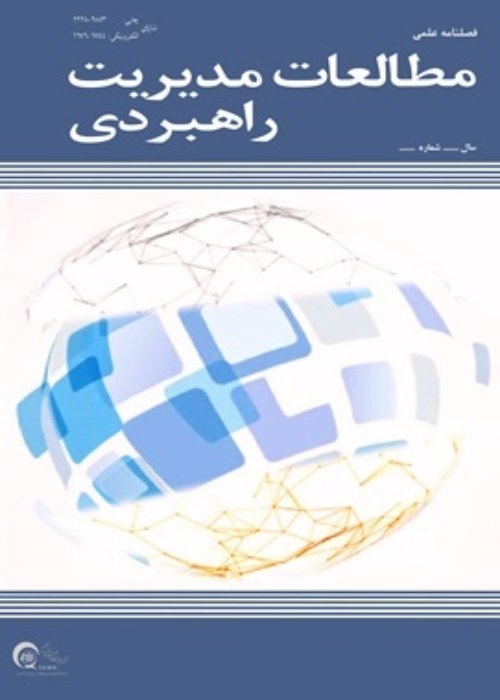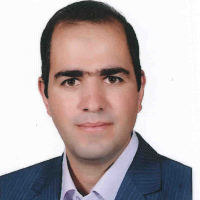Identifying the prerequisites and consequences of organizational succession
Author(s):
Article Type:
Research/Original Article (دارای رتبه معتبر)
Abstract:
Introduction
Succession planning is a fundamental and vital factor that should be related to the strategic goals of the organization and must be taken from this strategy and directly involves the line managers. Today, the emphasis on training and developing individual skills in successful organizations worldwide to meet future challenges and find suitable successors and achieve the organization's goals and missions is an important topic that is addressed in modern management theories. The succession planning system in organizations is a factor to increase the level of motivation of individuals, because employees, after being selected as future successors, strive with great motivation to achieve the best results. Since the managers of organizations are constantly changing and shifting in different situations and at different levels of the organization, once their position is vacant, the question usually arises as to who has the capacity to fill their position. Considering the various theories of human resources thinkers, especially in the field of succession planning, their emphasis on the necessity and importance of the issue, the upward trend of outflow of valuable technical and experienced capital from Iran Insurance Company in the retirement period, and concerns about the recruitment and employment of key employees by competing companies, which is currently one of the most important and serious challenges in the company, facing this phenomenon and the need to address it requires immediate attention.This research has been done in Iran Insurance Company and seeks to find the answer to the question of what factors affect succession planning in Iran Insurance Company and what the consequences of succession planning are.Methodology
The present study, based on purpose, is an applied and exploratory mixed-method and it consists of two parts qualitative and quantitative. The statistical population in the qualitative sector includes senior managers in the field of human resource management as well as specialists, experts, and veterans of the insurance industry. The non-probability sampling technique was snowball sampling and the number of samples was 21 based on the theoretical saturation. In this study, after conducting a semi-structured interview with managers and experts in the insurance industry, the qualitative data of the interviews were analyzed using Clark and Brown’s six-step thematic analysis.The collected data was first coded with an exploratory approach to thematic analysis and then the initial model was extracted. In the quantitative part, the statistical population of the research includes employed specialists, staff, managers, and experts as well as experts in the field of human resources of Iran Insurance Company. To determine the sample size, Cochran's formula was used for a limited population and 458 samples were selected. The data collection tool in this section was a researcher-made questionnaire that was designed based on the conceptual model obtained from the interviews. Cronbach's alpha coefficient was used to determine its reliability. Content and construct validity were also used to fit the validity of the assessment tool. Confirmatory factor loadings had appropriate values. Structural equation modeling and Amos24 software were used to analyze the data. Finally, the pattern of model fit indices was compared to standard values and tested and, finally, it was confirmed.Results and Discussion
In this study, individual, organizational, and environmental factors affecting succession planning were identified in Iran Insurance Company. Individual factors include the individual's emotional connection to the organization and the need to be seen and useful, organizational factors include ensuring the future management of the organization and upgrading and improving the organization, environmental factors are the requirements of the competitive environment and the risk of the organization's talents hunt, and mediating factors include continuing education and reward mechanisms affecting succession planning. The results also showed that the establishment of a succession model in Iran Insurance Company, in terms of individual consequences, affects increasing motivation for growth and excellence, psychological maturity and personal competence, and potential growth of ideas. In addition, in terms of organizational consequences, it is effective in reforming traditional structures, and in terms of environmental consequences, it is effective in differentiating from insurance competitors, creating a formal platform for transferring experiences and achievements, and reducing the organization's future concerns.Conclusion
In terms of the need to be seen and useful and emotional connection of the individual to the organization, it is suggested that the achievements of the individual efforts of employees be recorded in their own name and properly appreciated and reflected in the scoreboard. In the process of recruitment and retention, the risk of talent hunt by competitors can be reduced by increasing organizational attractiveness such as paying special attention to employee welfare, setting flexible working hours, increasing elite benefits, and creating study and skills opportunities at the international level, and creating special facilities for families of talented employees. The organization can also develop multiple successors with appropriate specializations at different levels and educate the selected group on an ongoing basis through leadership, decision-making, and management training. If the organization formulates its strategy to strengthen the succession programs, the positive and useful results and consequences of the succession program will be seen in the organization. To increase the level of psychological maturity and competence of employees, specialized psychological training appropriate to the type of work, environmental challenges, and stress levels should be held regularly. To develop ideation, a specific mechanism should be designed and implemented and a suitable platform for the growth of new ideas and the establishment of succession should be provided.Keywords:
Language:
Persian
Published:
Journal of Strategic Management Studies, Volume:14 Issue: 55, 2023
Pages:
87 to 113
magiran.com/p2646522
دانلود و مطالعه متن این مقاله با یکی از روشهای زیر امکان پذیر است:
اشتراک شخصی
با عضویت و پرداخت آنلاین حق اشتراک یکساله به مبلغ 1,390,000ريال میتوانید 70 عنوان مطلب دانلود کنید!
اشتراک سازمانی
به کتابخانه دانشگاه یا محل کار خود پیشنهاد کنید تا اشتراک سازمانی این پایگاه را برای دسترسی نامحدود همه کاربران به متن مطالب تهیه نمایند!
توجه!
- حق عضویت دریافتی صرف حمایت از نشریات عضو و نگهداری، تکمیل و توسعه مگیران میشود.
- پرداخت حق اشتراک و دانلود مقالات اجازه بازنشر آن در سایر رسانههای چاپی و دیجیتال را به کاربر نمیدهد.
In order to view content subscription is required
Personal subscription
Subscribe magiran.com for 70 € euros via PayPal and download 70 articles during a year.
Organization subscription
Please contact us to subscribe your university or library for unlimited access!



